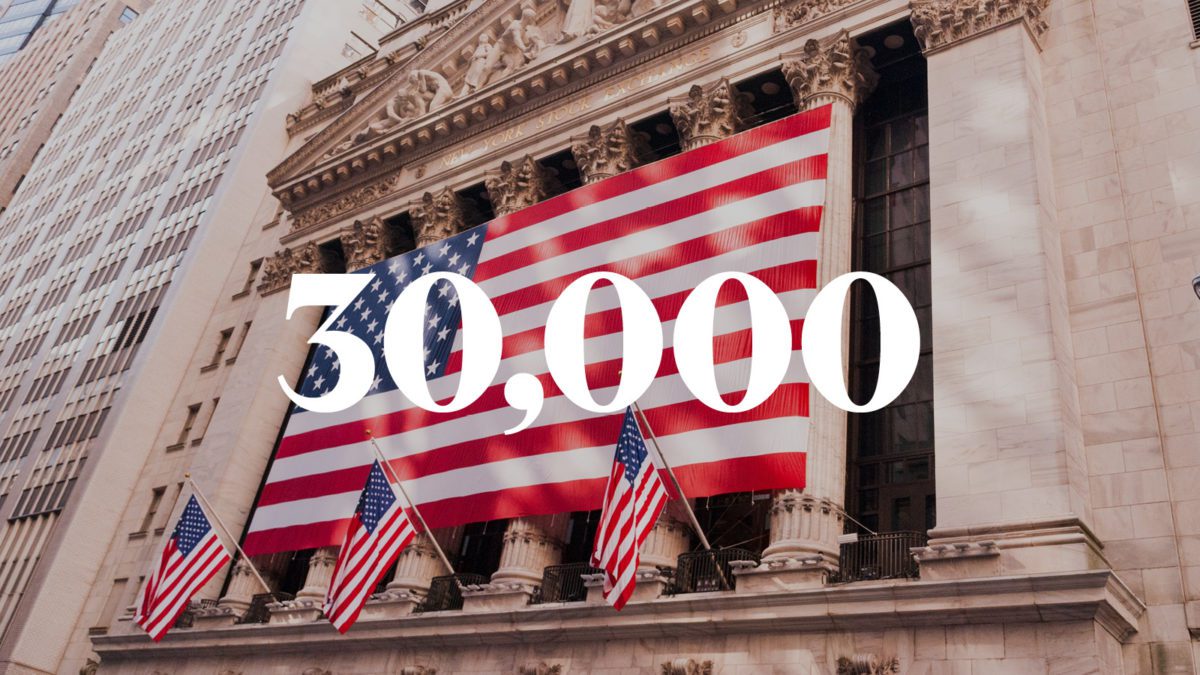Dow hits 30,000
The Dow Jones was the latest index to join the all-time high club in 2020, breaching 30,000 points this week. Despite being owned by Standard & Poor’s the index is regularly seen as the poorer cousin of the S&P 500 or tech focused Nasdaq Composite.
Why is that the case?
Despite being around since 1896 the Dow has fallen out of favour in the post GFC days, perhaps due to the predominantly ‘value’ oriented nature of many of its constituents or the very different structure of the index. The Dow is unique in that it tracks the performance of just 30 companies, compared to say the S&P 500 which covers 500 (well actually 505). Going further, it is actually price weighted, meaning that each of its holdings is weighted according to their share price, rather than their market cap.
In a world of market cap weighted indices, where the biggest companies by value receive the biggest allocations, and with them ETF flows, this is a substantial diversion from the norm. The result is a very different looking index despite what the headline sector exposures may suggest and a decidedly old-fashioned or ‘value’ tilt with a total value of $8 trillion.

The top ten holdings today are a mixed bunch of fast growing technology names, including Salesforce and Microsoft, a fast food chain in McDonald’s and an airline in Boeing Corp. Given the makeup of the portfolio it is little wonder why the Dow needed to see progress on a vaccine before catching up to its key competitors. Does this make the index more relevant in a post-pandemic world?
S&P500
The S&P 500 pips the Dow Jones at the post running in one way or another since 1860 and now tracks the 500 largest companies by market capitalisation. Importantly, the index is market cap weighted with the likes of Apple, Microsoft and Amazon dominating the holdings. In fact, the top 10 holdings equate to 26% of the entire index following their period of incredible dominance.
Some see this as a positive, with the index offering a ‘real’ exposure to the economy, others see this as proof of the counter intuitive nature of indexing. The broader nature of the index means the current market cap is now over $30 trillion and the most important in the world in 2020. Similarly, to the Dow, the index is rebalanced on a quarterly basis, with companies requiring a market cap exceeding $8.2 billion and a minimum level of liquidity.

The underlying portfolio is clearly very different and has a decidedly growth focus, with just three non-technology or digital-related businesses in the top 10, such has been their growing importance in our daily lives. Yet even with this dominance the index offers greater economic exposure than the Dow Jones.
Nasdaq 100
Similarly, to the S&P 500, the Nasdaq 100 is a market cap weighted index, but with an important caveat; Nasdaq applies certain rules to restrict the dominance of the largest components. The Nasdaq seeks to track the performance of 100 (103 today) of the largest US listed non-financial companies.
The index is young by comparison, commencing in 1985 as it sought to break the dominance of the Dow Jones and S&P 500. The exclusion of financial companies was an important differentiating point in the pre-GFC given the huge dominance of investment and traditional banks on the economy. The index is only updated on an annual basis, with a committee tasked with reviewing those companies not in the index, assessing weightings and re-ranking accordingly.
The result is a reasonably stable allocation, but with significant exposure to market ‘momentum’. The strong short-term performance of individual companies, like Tesla in recent months, can result in periodic over-weightings until the next rebalancing period. Readers would be well aware of the core constituents, with many similarities to the S&P 500:

The non-financial nature of the index means it is more flexible and active with companies ubiquitous with 2020 including Zoom Communications (NASDAQ: ZM) and NVIDIA (NASDAQ: NVDA) key holdings.
Which index is best for me?
As they say, value is in the eye of the beholder. The Nasdaq 100 has outperformed the S&P 500 in 10 of the last 12 years but many suggest it is now overvalued. Similarly, the index is heavily weighted to IT at 57% of the portfolio, with the S&P 500 clearly offering greater diversification. For the value oriented investor, the Dow Jones, despite its non-traditional structure, offers a unique diversifying factor.
How do I access them in Australia?
The most common way to access these indices in Australia is via an exchange traded fund provider, with the likes of Blackrock’s iShares and ETF Securities offering exposure to the Nasdaq 100 and S&P 500.
Unfortunately, there isn’t an Australian ETF index option for the Dow Jones (yet) with the US-listed DIA the only option on offer.









